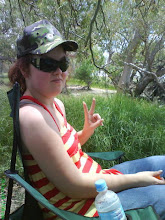IT COULD have put an end to our worries about the economy and those sharks at Sydney beaches.
At 12.40 yesterday morning, as the city slept, a previously unknown asteroid swept about 60,000 kilometres over the south-western Pacific.
In astronomical terms it was a close call. Estimated to be between 30 metres and 50 metres wide, it passed almost seven times closer than the moon.
"No object of that size, or larger, has been observed to come closer to the Earth," said Rob McNaught, of the Siding Spring Observatory, near Coonabarabran.
In 1908 an object possibly up to 50 metres across flattened some 2000 square kilometres of Siberian forest.
Mr McNaught said yesterday's asteroid was probably smaller but it could do a lot of damage to a city. If it had crashed into the ocean "I imagine it would produce a tsunami", he said.
Funded by NASA to search for asteroids bigger than one kilometre across, Mr McNaught spotted the object on Friday night. Within 24 hours astronomers had calculated it would narrowly miss the planet.
Mr McNaught said as the asteroid approached Earth yesterday morning it had glowed 5000 times brighter than on Friday night. "It was so bright I could actually observe it through the cloud. That is very rare," he said.
He believed that if 2009 DD45 had been on a collision course with a populated part of the planet, there would have been time to act. "A lot of people falsely claim there is nothing you could do, but there is. If there is an asteroid coming, and you have 24 hours, you can evacuate."
About 1000 asteroids are known to have come close enough to be classified as potentially hazardous.
While a collision with a one-kilometre-wide asteroid could cause global devastation, Mr McNaught said one that was just 300 metres wide could throw the world into "a short-term winter".
Objects bigger than one kilometre wide were likely to hit the world only every few million years but ones large enough to threaten a city crashed "probably once a century".




No comments:
Post a Comment